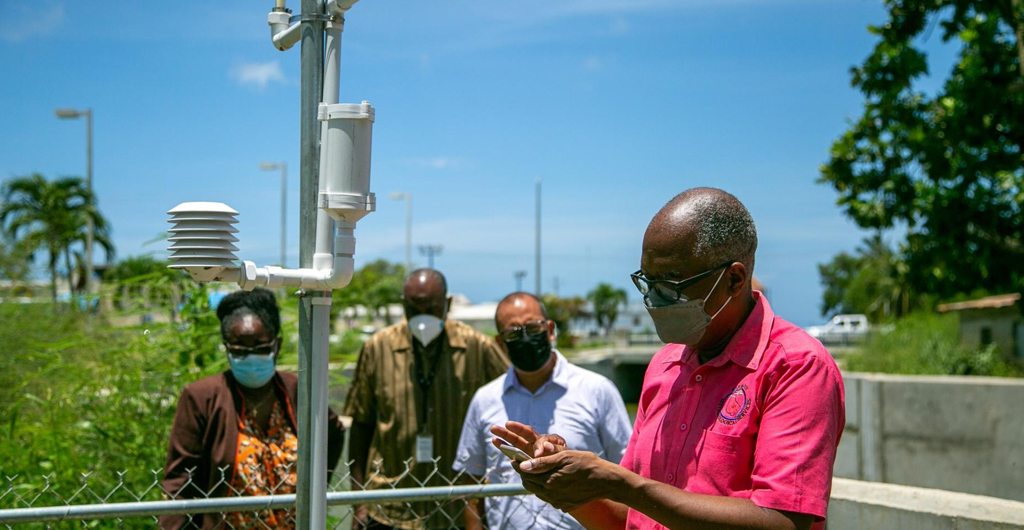Caribbean at the forefront of early warning systems
Downtown Bridgetown, Barbados, smells of ripe fruit and incense. In the thriving marketplace, sellers and buyers dance to the hectic pace of midday in contrast to the Caribbean Sea, placid and shimmering on the horizon.
The sea is a major character in the life of the island. Past and present, a source of food and tourism, water is the island’s main ally in its development. It is also, however, a permanent risk that requires effective planning and coordination to avoid disaster and ensure the prosperous lives of Barbadians.
Early warning systems are a serious issue in Barbados. For several years now, the Department of Emergency Management has undertaken the implementation of several projects, tsunami preparedness being one of the leading ones.
This year, the International Day for Disaster Risk Reduction focuses on the importance of increasing early warning systems, as stated in Target G of the Sendai Framework: “Substantially increase the availability of and access to multi-hazard early warning systems and disaster risk information and assessments to people by 2030”.
Earlier this year, UN Secretary-General António Guterres urged all countries to achieve 100 per cent coverage of their populations by early warning systems within the next five years. “Early Warning Systems save lives,” he said.
Integrating sectors
From the waterfront in the northern Barbados community of Speightstown, evacuation signs are everywhere. They point the way to a shelter after the alarms on the main pier sound. Further inland, on the seawall, a two-metre-high map has details of the most sensitive spots in the community, evacuation routes to shelters and the location of hospitals and other sensitive facilities. To minimise the possibility of failure in the face of the hazard, they conduct an annual drill, including all protocols and procedures in coordination with all authorities.
“Barbados’ experience with respect to disaster risk management and multi-hazard warning systems has been one of cooperation and collaboration, recognising that no single agency has all the resources available. It is a multi-state collaborative process, which is one of the fundamental pillars of the disaster risk management system,” says Kerry Hinds, director of the Department of Emergency Management.
The collaboration is indeed multi-state. About 500 metres away, on the banks of a canal and among mango and breadfruit trees, a small, one-metre-high fence guards a vital tool: a system that transmits the water level in the canal every 10 minutes to alert the community to the possibility of flooding, and also reports the temperature and wind speed and direction.
Neighbours appreciate the system for the new conditions: “I feel much safer,” says a grey-haired man in his 50s. This is just one of the 100 stations Barbados proposes to install over the next few years.
This community-based system on the coast of the Caribbean country is also part of an extension plan. In the coming months, it will include new communities in the south of the island, including Bridgetown itself, where the Caribbean nation’s most hectic and cosmopolitan life takes place.
Read more here.



